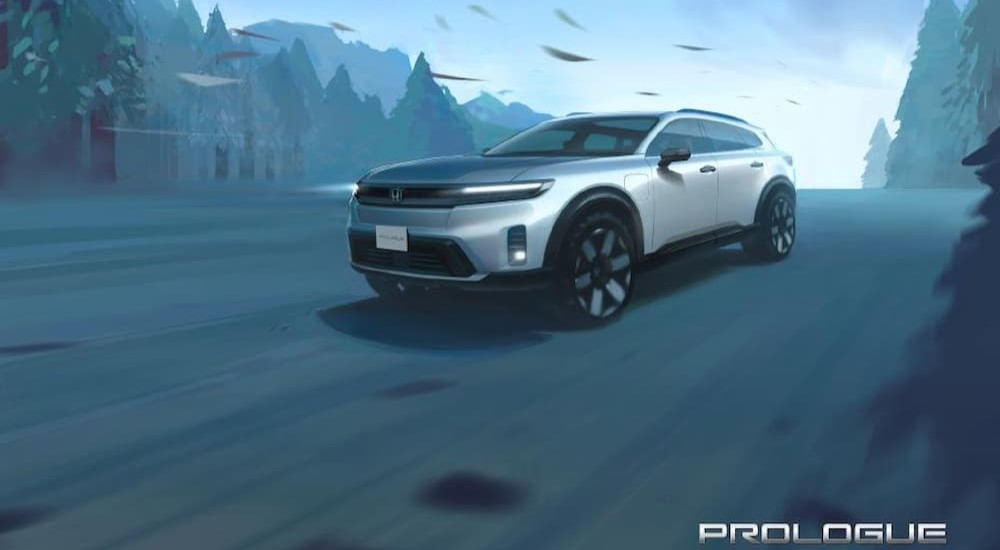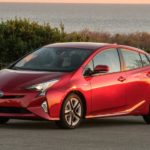Every automotive brand has a branch that conceptualizes what the future of the industry could look like. Researchers and designers adopt the challenge of conceiving new and interesting vehicles that will hopefully align with the next generation’s values and goals. Often, these concept cars are shown at specialized shows and are then hidden away—the best parts and ideas repurposed for either a model overdue for an upgrade or a new model that, while not a production of the initial concept, evokes or is oriented around a favorable aspect of the concept.
Honda is no exception, and it’s fascinating to see the threads connecting these concept cars to popular Honda models today, visible at any new or used Honda dealership. The legendary Japanese automaker has produced over seventy concept cars since its early days. Below are some of the most unique, but all were built for a purpose, and all continue to inspire generations of research and design.
The ’90s: Eclectic & Electric
Though Honda started designing concept cars a few decades earlier, the Honda R&D team really hit its stride at the beginning of the 1990s. The concept cars from this decade were made to study aerodynamics and efficiency, focusing on bringing vehicles into the future with hybrid engine-and-motor combinations, solar power, multi-purpose vehicles, and more.
The 1991 Honda EP-X, shown at the Chicago Auto Show, was a revelation, showcasing Honda’s pursuit of a personal transport vehicle that was highly efficient, speedy, and stylish. With its futuristic sports car looks, exceptional fuel efficiency, and two seats in a tandem seating style—designed to better protect the individuals inside in the case of a crash—the EP-X would be popular today, especially considering the extra safety considerations and high fuel efficiency. Not bad to look at, either.
Later on, in 1999, Honda revealed the Spocket concept car, billed as a convertible pickup sports car. Yes, you read that right. In the blink of an eye and push of a button, the Spocket could turn from pickup to convertible, and loading your equipment or gear was a cinch due to the Spocket’s loading ramp. What made the Spocket so unique, however, was its drivetrain system, with a hybrid motor-and-engine combo for the two front wheels and electric motors for the two back wheels, thereby equipping the Spocket with full-time four-wheel drive. In addition to the forward-looking hybrid drivetrain, there were no side mirrors; instead, the side views could be seen on the heads-up display on the driver’s side of the windshield. (Why isn’t this standard yet?!)
The ’00s: Lightweight & Clean
In 2003, Honda produced two concept cars that would be popular options even today. Shown at the 2003 Tokyo Motor Show, the Honda IMAS and Kiwami made a big splash, especially among bicycle enthusiasts, those looking for eco-friendly driving options, and drivers who enjoy pizzazz with their practicality.
The Honda IMAS was made to capture the feeling of riding on a bike—lightweight, aerodynamic, and environmentally friendly—in a package that would appeal to sports car fans. The vehicle only weighed 70 kg, or about 154 lbs, due to the construction materials used: aluminum and super-light carbon fiber. Because of its lightweight and aerodynamic design, the drag coefficient for the IMAS was an astonishing 0.20 Cd (the best possible rating is between .25 and .03 Cd), which made this little sports car a true marvel.
The Honda Kiwami, on the other hand, was Honda’s answer to the sedan—a lux, aerodynamic body with another first for the automotive world: fuel cell energy. Created to reflect the Japanese ideals of cleanliness and beauty, the Kiwami might have looked simple and elegant, but a lot of technology was in place to ensure that the driving experience was pleasant, relaxing, safe, and quiet. We could definitely use a Kiwami today to make our morning and evening commutes a better experience.
The ’10s: Sporty & Spicy
The 2010s were filled with Honda’s concept cars, many of them going on to evolve into familiar Honda models of today—the Honda Civic Si and a few different versions of the Accord. However, there were two concept cars that stood out from the rest, particularly because they were built for the sports car crowd.
The first was shown at the Tokyo Motor Show in 2011: the Honda EV-STR. Dubbed the next generation’s sports car, the EV-STR was a small, completely electric vehicle. It was eye-catching, from its lightweight body construction to its twin-lever steering. The EV-STR focused on creating a joyous driving experience, which is why the Honda R&D team equipped it with technology that allowed the driver to adjust suspension settings, output, and more to fully capture the range of the EV-STR’s capabilities.
At the Los Angeles International Auto Show in 2013, the FCEV concept car shocked and amazed those lucky enough to get a ticket. The FCEV was sleek and sophisticated, with seating for a driver and up to four passengers. It wowed industry professionals who were impressed with another of Honda’s firsts—a fuel-cell powertrain that was 33% smaller than previous builds yet 60% more powerful; capable of, at least in theory, driving over 300 miles before it needed a refuel, which took only three to five minutes and utilized hydrogen instead of gasoline, diesel, or electricity. Honda will hopefully continue researching this technology and provide us with a similar car for production in the future.
The ’20s: Looking Forward
Though there aren’t as many concept cars for this decade, as of yet, Honda is still working behind the scenes to provide the next generation of drivers with at least two very important pieces of tech: augmented driving and a better diversity of electric vehicles. To help combat global warming and worsening climate crises around the world, Honda has committed to making 30 electric vehicles that will be available in several markets. We’ll see the results, fittingly, at the end of the decade, and, a decade later, we’ll see gasoline-powered Honda models done away with entirely. Not only does this help clear the air, protect natural elements like water, and conserve limited energy sources, but it will lead to better, more powerful, longer-lasting vehicles.
Honda’s take on augmented driving could allow for more mobility for more people—instead of utilizing brakes, pedals, and ignition, the steering wheel houses all the technology needed. To start the car, just tap on the steering wheel. Instead of braking, pull the steering wheel toward you. If you want to go faster, push on the steering wheel. Honda understands that some people do truly enjoy their driving experience as it is, and they don’t want to take that away from customers. Instead, they’re working on enhancing that experience, allowing multiple transitions from completely manual to fully autonomous. What will it feel like when your car can read your intentions and blend its driving seamlessly with your own?
Which Concept Car Would You Like to See Go Into Production?
Honda’s lineup of concept cars is mesmerizing, to say the least. With so much innovation, utilization of current technology and scientific understanding, and attention to what matters in terms of clean energy and protecting our environment, Honda understands what is important to both current and future generations of drivers.
With the current focus on fuel cell technology, electric sports cars, and aerodynamic shape, Honda’s future models are sure to be exciting, high-tech, luxurious, and, of course, practical. Even practicality can look good when you pair it with lux amenities and high-tech features—hence why Honda is one of the most respected and well-known brands in the automotive industry. Tech is married to design, producing high-quality, beautiful vehicles that will retain their popularity for decades.
Based on what you’ve read here, which of these concepts do you think should have gone (or still should go) into production? Which would you be most interested in driving?




